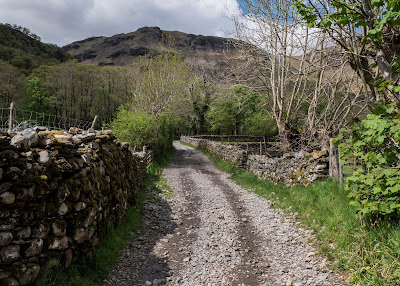Wells is a medieval city nestling on the southern side of the Mendip
Hills with the Somerset Levels stretching away to
the south and west. The history of Wells goes right back to Roman times, when we know that there was a settlement, probably because
of the springs that bubble up here. It gets its name from these
springs which can today be found in the gardens of the Bishop's
Palace.
It is the smallest city in England and
can call itself a city because of the famous 13th century
Cathedral which, as seems to be the case with lots of historic places these days, was covered in scaffolding, which is why there is a distinct shortage of photos of it in this blog.
Wells remains remarkably unspoilt and has lots of other historic
buildings like the moated Bishop's Palace, Vicars' Close and
St Cuthbert's Church. Outside the walls of The Bishop's Palace lies the Market Square and, as we picked a market day to visit, the place was heaving.
We quickly found refuge in The Bishop's Palace Gardens before making our way to Vicars' Close with its cobblestones and tall chimneys. It is claimed to be the oldest purely residential street with original buildings surviving intact in Europe. It consists of numerous Grade I listed buildings, built in the mid 14th century for Bishop Ralph of Shrewsbury,
plus a chapel and library at the north end, and a hall at the south end,
over an arched gate. Furthermore, it is connected at its southern end to the cathedral by way of an overhead walkway.
This was the first time since the start of the pandemic that we had both been to a crowded and hectic city, and it quickly tired us out. We were both relieved to get back to the car and travel the few miles to Glastonbury where hopefully we would get a bit of peace and quiet.
Wow, what a difference Glastonbury was. Its history, myth and legend combine in such a way that most
visitors cannot fail to feel the “vibes” and powerful atmosphere of the
town.
Straight out of the car park, and we were treated to some incredible street art and then, heading towards the Market Cross, we were hit by our first whiff of weed which more or less stayed with us throughout our visit!
The centre of town consists of a main street with a myriad of courtyards and alleyways leading off it. Every shop seems to be a New Age shop, selling incense, candle, crystals, jewellery, clothing etc. Everyone was friendly and no-one had a rush in them. In fact, it felt as though I had been transported back in time to the late 1960s hippy era, with groups of people just sat about chilling and having a 'smoke'.
Glastonbury is thought to have been a site for pre-Christian worship,
perhaps because of its location by the Tor. There is a form of terracing around it which
has been interpreted as a maze based on an ancient mystical pattern. If
so, it would have been created four or five thousand years ago, around
the same as time as Stonehenge. There is also a ruined medieval church at the top of the Tor, the tower of which remains.
Two thousand years ago, at the foot of the Tor was a vast lake called
“Ynys-witrin”, the Island of Glass. It is partly from this that the
association of Glastonbury with legendary Avalon comes about, as in
Celtic folklore Avalon was an isle of enchantment, the meeting place of
the dead. Legend has it that King Arthur, along with his wife Guinevere, are
buried in the grounds of Glastonbury Abbey, south of the Lady Chapel,
between two pillars. The monks of the Abbey, having heard the rumours,
decided to excavate the site and unearthed a stone slab, under which was
found a lead cross inscribed in Latin, “Hic iacet sepultus inclitus rex arturius in insula avalonia”, “Here lies buried the renowned King Arthur in the Isle of Avalon”. Also found were a few small bones and a scrap of hair.
The legend of the Holy Grail brings together the myths and legends of King Arthur
and the story of Joseph of Arimathea building the first church at
Glastonbury. The Glastonbury legend has the boy Jesus and his uncle
Joseph of Arimathea building the first wattle and daub church on the
site of Glastonbury Cathedral.
After the crucifixion, lore has it that Joseph travelled to Britain
with the Holy Grail, the cup used by Christ at the Last Supper and later
by Joseph to catch His blood at the crucifixion. Upon arriving on the
isle of Avalon, Joseph thrust his staff into the ground. In the morning,
his staff had taken root and grown into a strange thorn bush, the
sacred Glastonbury Thorn. Joseph is said to have buried the Holy Grail just below the Tor, where a
spring, now known as Chalice Well, began to flow, and the water was
supposed to bring eternal youth to whoever would drink it.
 |
Bishop's Palace Garden
|
 |
| Bishop's Palace |
 |
| Bishop's Palace |
 |
| Bishop's Palace |
 |
| Bishop's Palace |
 |
Wells Cathedral
|
 |
Wells Cathedral
|
 |
| Bishop's Palace |
 |
| Vicars' Close |
 |
| Vicars' Close |
 |
| Vicars' Close |
 |
| Vicars' Close |
 |
| Vicars' Close |
 |
| Vicars' Close |
 |
Bishop's Palace
|
 |
| Vicars' Close |
 |
Vicars' Close
|
 |
| Wells |
 |
Street Art, Glastonbury
|
 |
Street Art, Glastonbury
|
 |
Market Cross
|
 |
| Glastonbury |
 |
| Glastonbury |
 |
| Glastonbury |
 |
Glastonbury Tor
|
 |
| Glastonbury |
 |
| Glastonbury |
 |
| Glastonbury |
 |
| Glastonbury |
 |
| Glastonbury |
 |
| Glastonbury |









































































